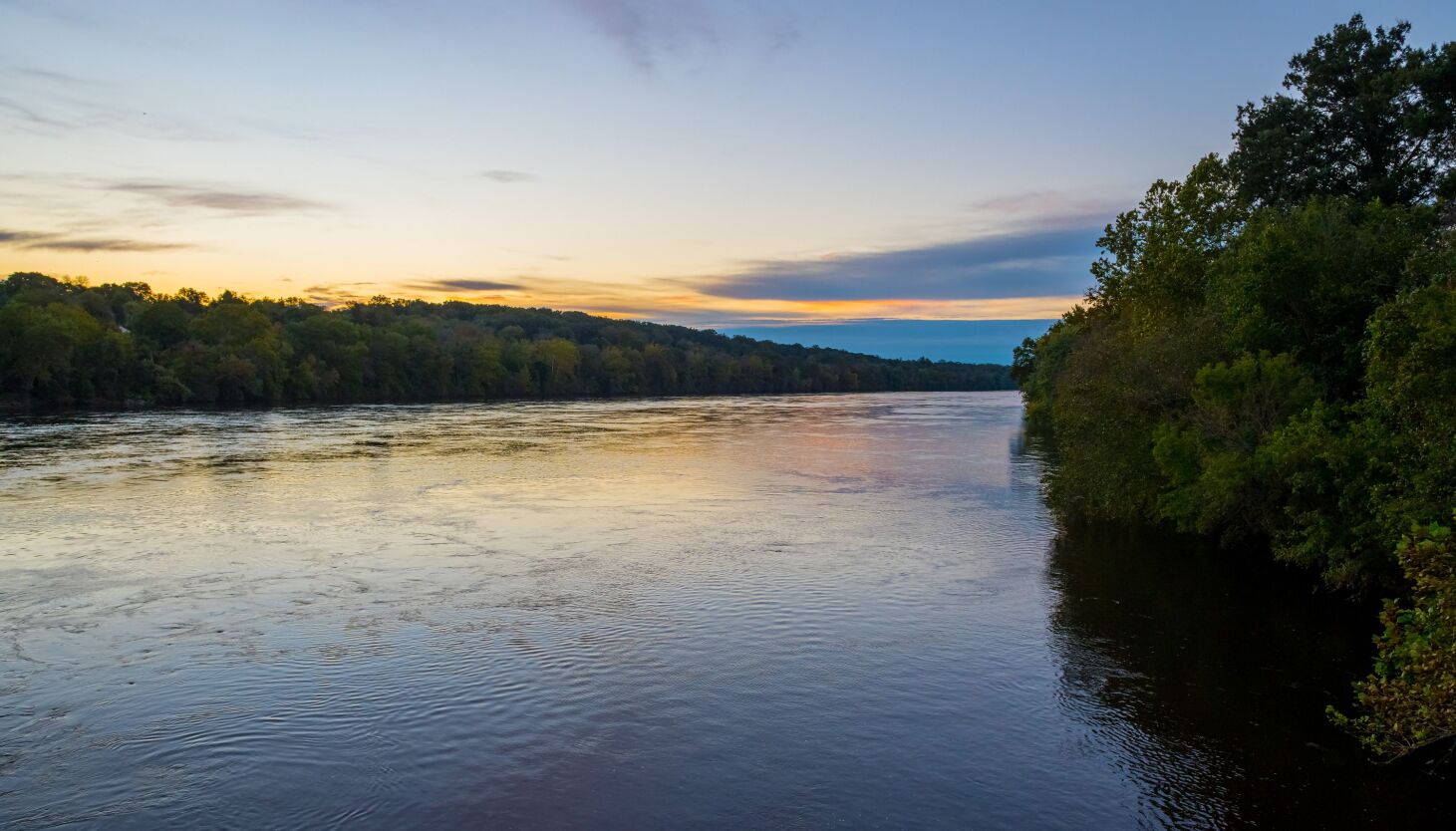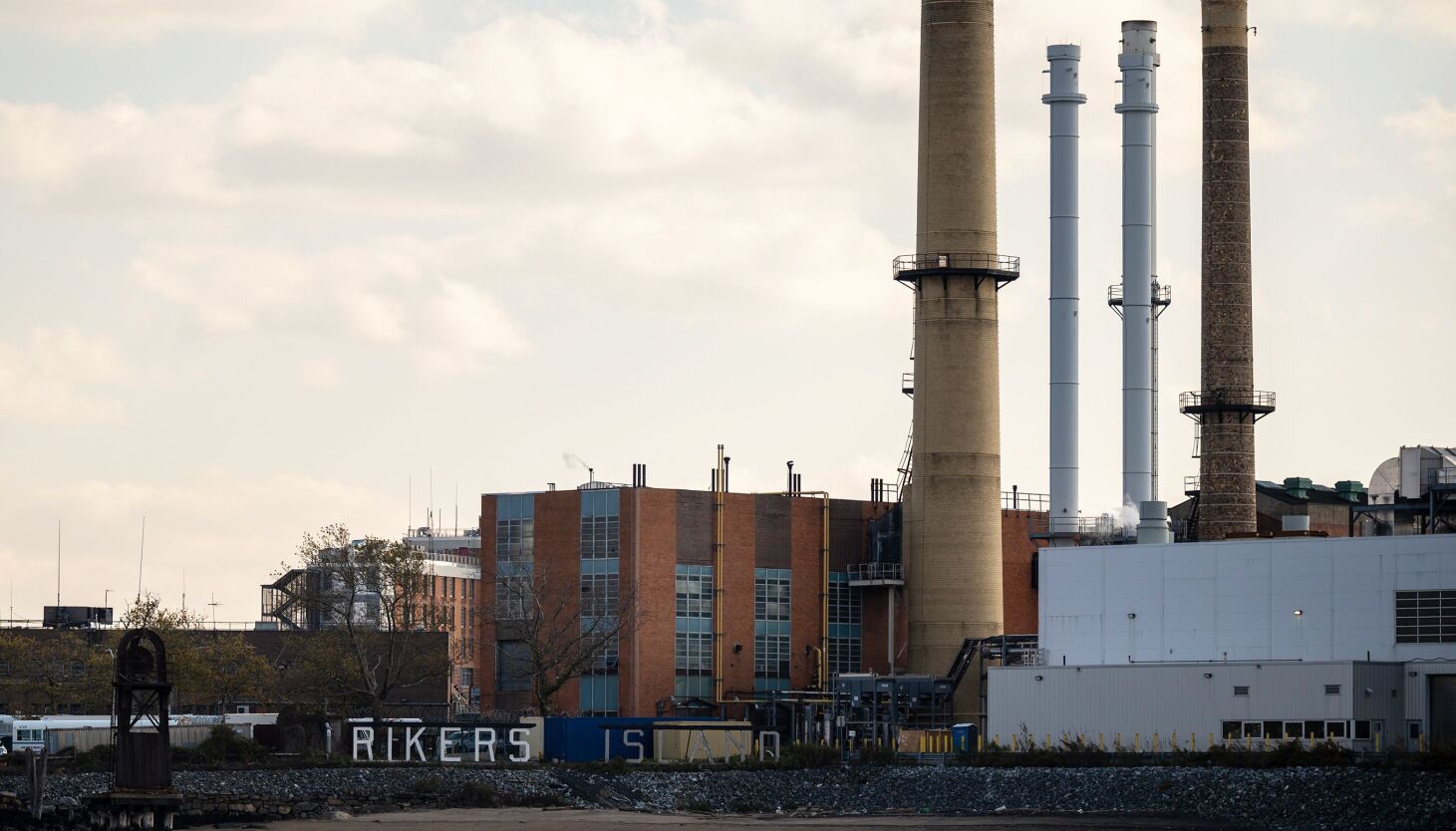Sea level rise creates a predicament for New York City and other areas that depend on the water of the Delaware River Basin to quench their residents’ thirst. Multiple climate impacts raise the question of whether there will be adequate water for all in years to come.
A multistate agency is studying the scope of the future problem, and the jurisdictions are gearing up to solve it.
As a result of climate change causing ocean levels to rise, seawater is advancing farther north in the Delaware River than in the past, experts say. The push of the so-called salt front could jeopardize the quality of drinking water supplied to Philadelphia, as well as other parts of Pennsylvania and New Jersey — yet the process of keeping it at bay as the climate continues to change could affect some of New York City’s drinking water supply.
The Delaware River Watershed is a 13,000-square-mile area that covers three states. New York City’s reservoirs within it supply half of the drinking water to the five boroughs. But those reservoirs must also periodically release water downstream to maintain the flow of the Delaware River and make sure other locales’ drinking water isn’t saline — by pushing back the salt front.
Officials and scientists studying sea-level rise now worry that, combined with the future possibility of a particularly intense drought, a double whammy could force New York to release even more water from those reservoirs at a time when the city would need it the most.
“The likelihood of both of those two things happening over the next three years is quite, quite low,” said NYC Department of Environmental Protection Commissioner and Chief Climate Officer Rohit Aggarwala. “The likelihood over the next 20 years, over the next 40 years, over the next 100 years is getting to a place where I think you have to take it seriously.”
Very dry conditions might lead to the Delaware River itself drying out. Water levels in New York City’s upstate reservoirs could also dwindle.
“In an extreme drought scenario, it is not clear to me whether there is enough water for everybody,” Aggarwala said.
As part of efforts to plan ahead, he and counterparts from other cities and states that rely on the Delaware River are convening on Jan. 31 at the Delaware Estuary Science and Environmental Summit in Atlantic City.
Flow of Concern
The saline threat over the past several decades has been the subject of agreements and negotiations, which likely will become more high-stakes over time.
For about 40 years, New York City has been obligated to maintain a certain flow rate to the Delaware River, which involves releasing water from its upstream reservoirs to repel the salty creep of the Atlantic Ocean.
That obligation came as part of a multistate drought management plan created in 1983 in response to the record drought in the 1960s, when the region received only sporadic rain from 1961 to 1966. During this period, two of the city’s reservoirs nearly dried up, and the salt front made it to its highest level yet on the Delaware River: River Mile 102, near northeast Philadelphia by the Benjamin Franklin Bridge — just eight miles from where Philadelphia draws its drinking water.
For comparison, the salt front’s current monthly median location is River Mile 69 near the Delaware Memorial Bridge, south of Wilmington.
The salt front has not gotten worse over time. Its position of staying roughly no higher than River Mile 90 is proof “the drought management program actually works,” said Amy Shallcross, manager of water resource operations at the Delaware River Basin Commission, a four-state agency that oversees the river.
The goal is to keep the salt front below River Mile 98. But the effects of climate change could alter that.
“Not only do they just have the uncertainty of the salt front in general, but sea level rise has the potential to make it worse,” Shallcross said. “All of the planning they did in the 1980s, after the drought of the ’60s, may no longer be good enough to protect the drinking water supplies of Philadelphia, and also, it might change the amount of water that New York City has to release during a drought emergency.”
During droughts, which can also affect the amount of water in reservoirs, New York City is allowed to release less water than normal, but that practice may also need to shift if the salt front gets higher upriver.
Kelly Anderson, the program manager of water resources planning and protection at the Philadelphia Water Department, said that’s why it’s important to figure out contingencies now, even if the problem is in the future.
“We want to make sure and ensure that the watershed policies are in place and that the reservoirs are being managed and that flow is being managed in that 10,000-square-mile area above us, so we have enough water in the rivers to meet the needs of the city and the other areas around Philadelphia,” Anderson said.
She pointed out that more rain, which is expected as a result of climate change, could recharge the reservoirs and provide enough water to help hold back the salt front.
Searching for Solutions
Shallcross and her colleagues are working on a report, due for publication this year, about the scope of the problem of the salt front’s movement, as climate change progresses. It will examine ideas for responding. With the report should come some certainty about how much further upstream — and how often — the salt front can be expected to travel.
Philadelphia, which gets 60% of its drinking water from the Delaware River, is also preparing scientific analyses to anticipate any policy changes or treatment modifications it may need to make down the road, according to Anderson.
That data could influence any changes made to the drought management plan, which New York state, New York City, Pennsylvania, New Jersey and Delaware must all approve. In the coming years, the states are poised to decide on changes regarding the flow policies, because the plan guiding flow management practices now ends in 2028.
Possible solutions to the problem could include ramping up the flow of reservoir releases for a period of time, constructing plants to remove the salt in the water, and increasing the storage capacity of reservoirs. Another solution is moving the location where drinking water comes out of the river further upstream — away from the salt front. The U.S. Army Corps of Engineers has been studying the possibility of releasing water from a Pennsylvania reservoir into the Delaware River during droughts.
Any action has to consider various uses of water in the region — for drinking, hydropower, flood mitigation and recreation — as well as the watershed’s overall ecological health and the potential impacts to surrounding residents.
“My perception is that over the last many years, basically, the states and the city, frankly, have treated this as a kind of a zero-sum game,” Aggarwala said. “We should all be looking at whatever the most logical, most cost-effective, most environmentally friendly solutions are, but then it’s really important to make sure that we think about them as a shared solution that might involve sharing costs.”




